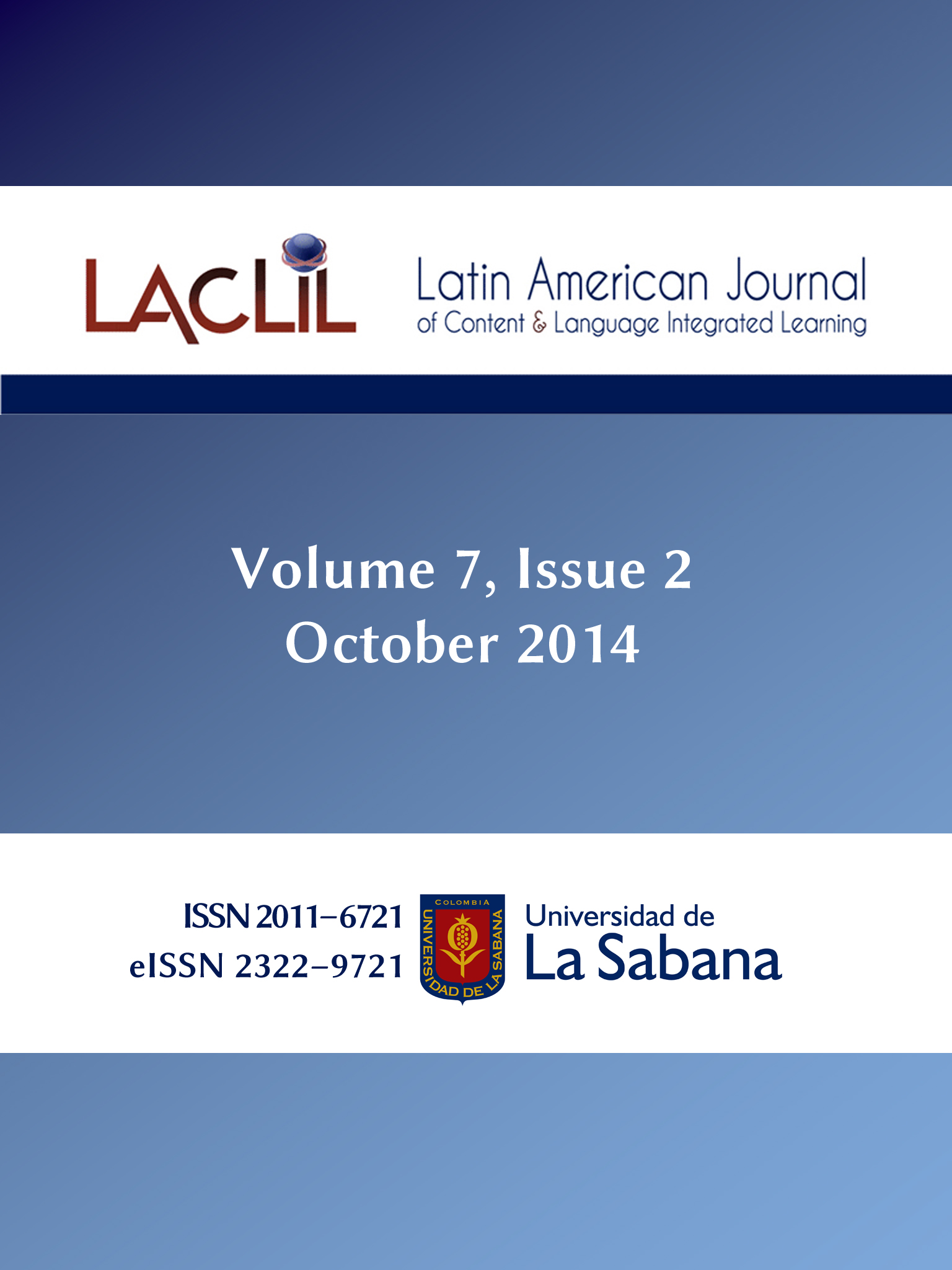Demystifying some possible limitations of CLIL (content and language integrated learning) in the EFL classroom
DOI:
https://doi.org/10.5294/4105Keywords:
AICLE, limitaciones, implementación, inglés como lengua extranjera, contexto de docencia .Abstract
As a result of globalization, the world is constantly changing, people are overwhelmed with information and English is the language that typically serves as lingua franca to learn new content. In recent years, as a direct response to these changes, CLIL (Content and Language Integrated Learning) may be considered the approach in charge of providing suitable answers despite its possible limitations. Innovations, changes, students´ needs, new resources, meaningful content and a communicative perspective are involved in CLIL, a profitable and valuable means to teaching English as a Foreign Language. The main purpose of this work is to encourage EFL teachers to implement this approach, in spite of its constraints. Now the challenge seems to be finding out how this approach will lead us towards the achievement our goal.
Keywords: CLIL drawbacks, CLIL implementation, EFL teaching contexts
Downloads
References
Celce-murcia, M. (1980). New methods in perspective in mextesol journal iv/4.
Coyle, C., Hood, P., Marsh, D. (2010). Content and language Integrated Learning. Cambridge: Cambridge University Press.
Crandall, J. (1998). Collaborate and cooperate. Teacher education for integrating language and content instruction. Retrieved from: http://dosfan.lib.uic.edu/usia/E-USIA/forum/vols/vol36/no1/p2.htm
Dirección general de cultura y educación de la provincia de Buenos Aires. (2010). Diseño curricular para la educación secundaria ingles 5to año. La Plata. Buenos Aires.
Graddol, D. (2004): Spoken everywhere but at what cost? Retrieved from: http://www.guardian.co.uk/guardianweekly/story/0,12674,1464367,00.html
Graddol, D. (2006): English next: British council publications. Retrieved from: http://www.britishcouncil.org/learning-research-english-next.pdf
Marsh, D. (2002): Content and language integrated learning: the European dimension - actions, trends and foresight potential). Retrieved from:
http://europa.eu.int/comm/education/languages/index.html
Marsh, D. (2004): Adding language without taking way Retrieved from: http://www.guardian.co.uk/guardianweekly/story/0,12674,1464367,00.html
Marsh, D., Maljers, A., Hartiala, A. (2001). Profiling European Clil classrooms. Languages open doors. The Netherlands & University of Jyväskylä: European Platform for Dutch Education. Retrieved from: http://lakk.bildung.hessen.de/netzwerk/faecher/bilingual/Magazin/mat_aufsaetze/clilprofiling.pdf
Phillipson, R. (1992): Linguistic imperialism. Oxford: Oxford University Press.
Downloads
Published
How to Cite
Issue
Section
License
This Journal and its articles are published under the Creative Commons CC BY 4.0 DEED Attribution 4.0 International license. You are free to: Share — copy and redistribute the material in any medium or format for any purpose, even commercially. Adapt — remix, transform, and build upon the material for any purpose, even commercially. The license cannot revoke these freedoms as long as you follow the terms of the license.








